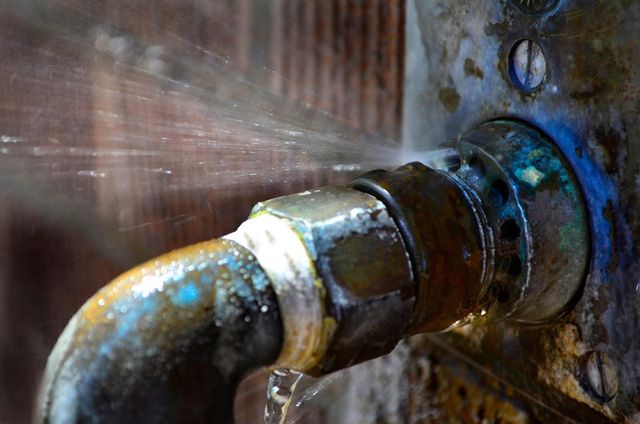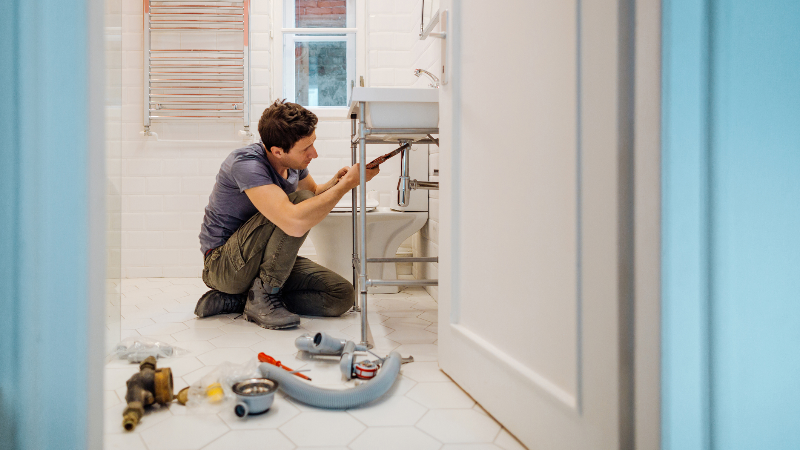Noisy Plumbing Problems Addressed!
Noisy Plumbing Problems Addressed!
Blog Article
This post listed below involving Diagnose Unwanted Plumbing Noises is totally interesting. Don't miss out on it.

To detect loud plumbing, it is necessary to determine first whether the undesirable audios take place on the system's inlet side-in other words, when water is turned on-or on the drainpipe side. Sounds on the inlet side have actually differed reasons: too much water stress, used shutoff and also tap components, poorly connected pumps or other appliances, incorrectly placed pipe bolts, and also plumbing runs including a lot of limited bends or various other constraints. Sounds on the drain side normally originate from inadequate area or, as with some inlet side noise, a layout including tight bends.
Hissing
Hissing noise that happens when a tap is opened somewhat normally signals too much water stress. Consult your neighborhood public utility if you believe this problem; it will certainly have the ability to inform you the water stress in your location as well as can mount a pressurereducing valve on the incoming water supply pipe if necessary.
Other Inlet Side Noises
Creaking, squeaking, damaging, breaking, and also touching generally are brought on by the development or tightening of pipelines, normally copper ones supplying hot water. The sounds take place as the pipelines slide against loose bolts or strike neighboring home framing. You can commonly identify the location of the trouble if the pipelines are subjected; just adhere to the noise when the pipes are making noise. More than likely you will discover a loosened pipeline hanger or a location where pipelines lie so near floor joists or various other framing items that they clatter against them. Attaching foam pipeline insulation around the pipelines at the point of get in touch with ought to remedy the trouble. Make certain straps and hangers are safe and give appropriate support. Where feasible, pipe bolts ought to be affixed to enormous architectural aspects such as structure walls as opposed to to mounting; doing so minimizes the transmission of vibrations from plumbing to surface areas that can magnify as well as transfer them. If affixing fasteners to framework is inescapable, wrap pipelines with insulation or other resistant material where they speak to fasteners, and also sandwich the ends of brand-new fasteners between rubber washing machines when installing them.
Dealing with plumbing runs that struggle with flow-restricting limited or numerous bends is a last resort that ought to be taken on only after seeking advice from a skilled plumbing specialist. However, this circumstance is rather common in older homes that might not have been developed with interior plumbing or that have seen numerous remodels, especially by novices.
Babbling or Screeching
Intense chattering or shrieking that takes place when a valve or faucet is activated, and that typically disappears when the installation is opened totally, signals loose or faulty inner components. The service is to change the shutoff or tap with a new one.
Pumps as well as devices such as cleaning devices as well as dish washers can transfer motor noise to pipes if they are incorrectly attached. Connect such items to plumbing with plastic or rubber hoses-never stiff pipe-to isolate them.
Drain Sound
On the drain side of plumbing, the principal objectives are to remove surfaces that can be struck by falling or rushing water as well as to shield pipelines to contain unavoidable noises.
In new building and construction, bath tubs, shower stalls, commodes, and wallmounted sinks and basins ought to be set on or versus resilient underlayments to decrease the transmission of noise with them. Water-saving commodes as well as faucets are less loud than standard versions; install them instead of older types even if codes in your area still permit using older fixtures.
Drainpipes that do not run vertically to the basement or that branch into horizontal pipe runs supported at floor joists or various other mounting existing specifically troublesome sound troubles. Such pipelines are huge sufficient to emit considerable vibration; they also carry significant amounts of water, that makes the scenario even worse. In brand-new building and construction, define cast-iron dirt pipes (the big pipes that drain toilets) if you can afford them. Their enormity consists of much of the noise made by water passing through them. Also, avoid transmitting drains in wall surfaces shown rooms and also spaces where people gather. Walls having drains must be soundproofed as was explained earlier, using dual panels of sound-insulating fiber board as well as wallboard. Pipes themselves can be wrapped with unique fiberglass insulation produced the purpose; such pipelines have a resistant vinyl skin (sometimes having lead). Outcomes are not always acceptable.
Thudding
Thudding sound, commonly accompanied by trembling pipelines, when a faucet or appliance shutoff is shut off is a condition called water hammer. The noise and also vibration are caused by the resounding wave of pressure in the water, which suddenly has no area to go. Often opening a shutoff that releases water promptly into a section of piping having a limitation, elbow, or tee installation can create the very same problem.
Water hammer can usually be healed by mounting installations called air chambers or shock absorbers in the plumbing to which the problem shutoffs or faucets are attached. These gadgets permit the shock wave produced by the halted flow of water to dissipate airborne they include, which (unlike water) is compressible.
Older plumbing systems might have short upright sections of capped pipeline behind walls on tap runs for the very same purpose; these can at some point fill with water, lowering or ruining their performance. The remedy is to drain pipes the water system totally by shutting down the main water system valve as well as opening all faucets. After that open the major supply valve as well as shut the faucets one by one, beginning with the faucet nearest the shutoff and ending with the one farthest away.
3 Most Common Reasons for Noisy Water Pipes
Water hammer
When water is running and is then suddenly turned off, the rushing liquid has no place to go and slams against the shut-off valve. The loud, thudding sound that follows is known as a water hammer. Besides being alarming, water hammer can potentially damage joints and connections in the water pipe itself. There are two primary methods of addressing this issue.
Check your air chamber. An air chamber is essentially a vertical pipe located near your faucet, often in the wall cavity that holds the plumbing connected to your sink or tub. The chamber is filled with air that compresses and absorbs the shock of the fast moving water when it suddenly stops. Unfortunately, over time air chambers tend to fill with water and lose their effectiveness. To replenish the air chambers in your house you can do the following. Turn off the water supply to your house at the main supply (or street level). Open your faucets to drain all of the water from your plumbing system. Turn the water back on. The incoming water will flush the air out of the pipes but not out of the vertical air chamber, where the air supply has been restored. Copper pipes
Copper pipes tend to expand as hot water passes through and transfers some of its heat to them. (Copper is both malleable and ductile.) In tight quarters, copper hot-water lines can expand and then noisily rub against your home's hidden structural features — studs, joists, support brackets, etc. — as it contracts.
One possible solution to this problem is to slightly lower the temperature setting on your hot water heater. In all but the most extreme cases, expanding and contracting copper pipes will not spring a leak. Unless you’re remodeling, there's no reason to remove sheetrock and insert foam padding around your copper pipes.
Water pressure that’s too high
If your water pressure is too high, it can also cause noisy water pipes. Worse, high water pressure can damage water-supplied appliances, such as your washing machine and dishwasher.
Most modern homes are equipped with a pressure regulator that's mounted where the water supply enters the house. If your home lacks a regulator, consider having one professionally installed. Finally, remember that most plumbers recommend that water is delivered throughout your home at no lower than 40 and no greater than 80 psi (pounds per square inch).
Whatever the state of your plumbing, one thing is certain — you’re eventually going to encounter repair and replacement issues around your home that require professional help. That’s where American Home Shield can come to your aid.
https://www.ahs.com/home-matters/repair-maintenance/causes-of-noisy-water-pipes/

As a devoted person who reads on Diagnose Unwanted Plumbing Noises, I think sharing that segment was a smart idea. Loved our post? Please share it. Let someone else discover it. We thank you for reading our article about Diagnose Unwanted Plumbing Noises.
Book 24/7 Report this page